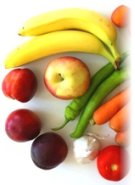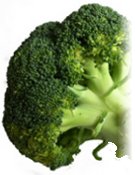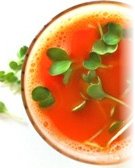Nutrition Tips, Food Advice & Recipes for Relieving PMS
Looking for natural ways to relieve PMS symptoms? Head to the kitchen! From drinking milk and eating sesame seeds to stepping up your dietary intake of magnesium, there are plenty of dietary habits that can bring relief from PMS. The purpose of this online guide is to provide diet tips, food advice, and recipes for women who suffer from premenstrual syndrome.
Pre-menstrual syndrome (PMS) is a collection of symptoms that affects an estimated 80 percent of menstruating women. These symptoms, which typically occur during the second half of the menstrual cycle, may include anxiety, depression, irritability, abdominal bloating, fatigue, water retention, breast tenderness, and food cravings.
Although the exact causes of PMS are not fully understood, it is thought that hormones play a major role. During the first half of a woman's menstrual cycle, the hormone estrogen rises. During the second half, after ovulation, estrogen levels fall, and progesterone levels increase. Researchers believe that PMS symptoms could be caused by an elevated estrogen-to-progesterone ratio during the second half of the menstrual cycle. Elevated estrogen levels can result from overproduction of estrogen or from reduced secretion of progesterone. Some man-made chemicals, such as certain pesticides used in commercial farming and bisphenol-A (BPA) found in plastic bottles, can mimic estrogen in the body and may therefore further aggravate hormonal imbalance.
While medical interventions can be used to treat the most severe cases of PMS, changes in lifestyle and/or diet may be enough to alleviate symptoms in many cases. Some studies have shown regular aerobic exercise (such as running, cycling, and swimming) to be highly effective in relieving symptoms. Women prone to PMS should also try to get adequate rest and sleep.
In this section of the healwithfood.org website, our Guide to Treating PMS, you will find a whole host of diet-related information and tips on how to relieve PMS symptoms by changing the way you eat. This online guide is structured along three main sections: diet tips, food recommendations, and recipes featuring anti-PMS foods:

The Anti-PMS Diet: 10 Best Tips for Controlling PMS
The food you put into your mouth can have a significant impact on the severity of your PMS symptoms. In this section of our nutrition guide to relieving PMS, we look at how certain dietary habits – such as eating foods rich in magnesium, vitamin B6, zinc, and calcium – can bring women relief from PMS symptoms.
View Diet Tips
9 Foods to Eat for PMS Relief
Learn why foods like sunflower seeds, milk, wheat germ, bananas, barley, sesame seeds, oats, and kale are among the most effective natural remedies for PMS. And the best thing is, not only are these superfoods good at relieving PMS, they are also packed with flavor!
View Food List
Anti-PMS Recipes
Treat your taste buds to our broccoli salad which is loaded with anti-PMS nutrients such as vitamin B6, calcium, zinc, magnesium, and dietary fiber. Or how about some beet and carrot soup specifically designed to control PMS symptoms? To view the recipes for these and other delicious anti-PMS dishes, click on the link below.
View Recipes
